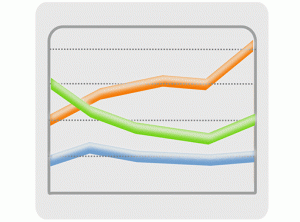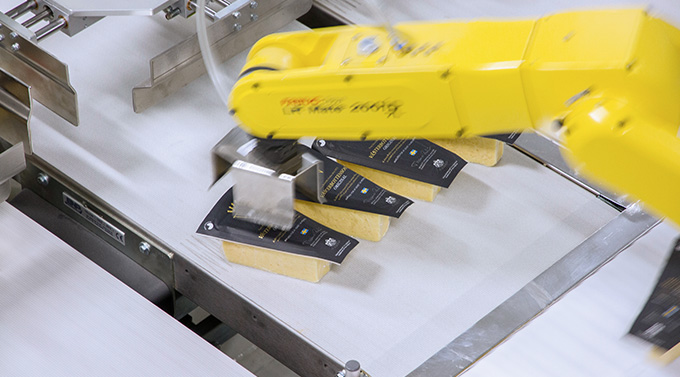
Produce more products and receive a higher return on investment with less effort – who would say no to that? By monitoring the performance of your production lines, you will be pointed in the right direction to find any weak links in your production. This blog article will describe the importance of monitoring, and how it can benefit your production result.
It is important to monitor performance in production lines in all types of businesses
Why is it important to monitor performance in production lines, you might wonder? The main argument is simple – you can’t improve what you don’t measure. If you don’t have measurements or data telling you how your production is performing, it is hard to make improvements that can make your production equipment more efficient. The monitoring of a production line’s performance is relevant in all types of businesses, but mainly in the businesses where the margins are tight. In, for example, the food packaging business, where the margins are razor thin, a small increase in effectiveness can make a big difference to your bottom line.
Adapt your monitoring method according to your business and needs
Depending on factory and business, there are several ways to monitor the performance of a production line. In theory, the simplest way is to use pen and paper and have someone watching the production line, using a stopwatch. In reality, if you have a complex factory with many machines, this solution is not realistic for anything but a short-term test. Instead, a more suitable and also a more common solution, is to use a software-based solution. A software program delivers useful and detailed information on how your production line is doing and where there is room for improvements. The more accurate measuring method, the better your adaptions will be to improve your production line’s performance.
The monitoring of a production line can affect the production result
 A scenario, for when you need to monitor the performance of your production line, could be when you know that you produce too few products, but you don’t know why. To locate the problem, you might need to measure the performance of individual machines. Let’s say your machine should produce 100 products per hour, and work with 100 percent capacity for eight hours straight. However, after analyzing the monitoring result, you discover that your machine only was active for seven out of the eight hours. The monitoring also revealed that the machine only produced 80 products per hour – and on top of that – 20 percent of the products coming out were scrap! Obviously, the machine’s performance is not what it says on paper. By conducting the analysis, you identify where the losses are coming from, which will give you an indication of what you will need to do to solve the problem.
A scenario, for when you need to monitor the performance of your production line, could be when you know that you produce too few products, but you don’t know why. To locate the problem, you might need to measure the performance of individual machines. Let’s say your machine should produce 100 products per hour, and work with 100 percent capacity for eight hours straight. However, after analyzing the monitoring result, you discover that your machine only was active for seven out of the eight hours. The monitoring also revealed that the machine only produced 80 products per hour – and on top of that – 20 percent of the products coming out were scrap! Obviously, the machine’s performance is not what it says on paper. By conducting the analysis, you identify where the losses are coming from, which will give you an indication of what you will need to do to solve the problem.
Look at the whole picture when analyzing the result
 When analyzing the result of a performance monitoring, it is crucial to look at the whole picture and view the behaviour of several machines in relation to each other. An analysis of a production line, consisting of five or six machines, could point out one of the machines and state its lackluster performance. That doesn’t necessarily mean that it is that machine’s fault, it could just as well be the machine in front of it that performs poorly. When monitoring the movement of the production line, you might see that the machine spends a lot of time waiting for the machine leading up to it. Thus, the machine spends time in a starved state. Another scenario could be that the machine performing poorly actually works perfectly, but it is the machine after, that is in trouble. The conveyor belt between these two machines might be so full that it can’t fit any more products. It is also important to analyze the result based on time versus frequency. A machine could have a fault occurring a hundred times a day, and each time, the machine would stop for ten seconds. It would be worse though, if the same machine had a fault occurring only three times a day, but the fault would block your machine for two hours each time.
When analyzing the result of a performance monitoring, it is crucial to look at the whole picture and view the behaviour of several machines in relation to each other. An analysis of a production line, consisting of five or six machines, could point out one of the machines and state its lackluster performance. That doesn’t necessarily mean that it is that machine’s fault, it could just as well be the machine in front of it that performs poorly. When monitoring the movement of the production line, you might see that the machine spends a lot of time waiting for the machine leading up to it. Thus, the machine spends time in a starved state. Another scenario could be that the machine performing poorly actually works perfectly, but it is the machine after, that is in trouble. The conveyor belt between these two machines might be so full that it can’t fit any more products. It is also important to analyze the result based on time versus frequency. A machine could have a fault occurring a hundred times a day, and each time, the machine would stop for ten seconds. It would be worse though, if the same machine had a fault occurring only three times a day, but the fault would block your machine for two hours each time.
In case of a machine break down, your monitoring software should communicate directly with your machines. That enables the machine to show different error codes explaining why it has stopped producing. This method brings you a set of tools that will help rule out different scenarios, and get your production up and running again, decreasing down-time.
MES – prevents mistakes from occurring in your production line
The manufacturing execution system, MES, is the Rolls Royce of monitoring. When it comes to a wrapping machine for example, the system can tell you which material are supposed to come in and out of the machine. It clarifies which material that was installed, at what date and time, and even who did it! If a product comes back with poor quality, you can check the material that was used for that production. When installing material in a machine, the MES can scan a barcode on the material to check if it is correct or not. This enables you to prevent mistakes from occurring. The system can also check a product before entering the next machine on a production line, to see if it is missing any parts or if it has gone through all of the prior machines. This leads to high traceability, which is one of the goals of monitoring.
Produce more products and receive a higher return on investment with less effort
 A continuous monitoring of your production line will enable you and your factory to produce more products and receive a higher return on investment with less effort. By using the same line and the same machines, you enable a higher production, without investing in new equipment or hiring more people. We, at FlexLink, advise you to monitor your production continuously, to always receive feedback on how your production line is doing. That will enable you to identify the bottlenecks of your factory, decrease downtime and ensure a high overall equipment efficiency.
A continuous monitoring of your production line will enable you and your factory to produce more products and receive a higher return on investment with less effort. By using the same line and the same machines, you enable a higher production, without investing in new equipment or hiring more people. We, at FlexLink, advise you to monitor your production continuously, to always receive feedback on how your production line is doing. That will enable you to identify the bottlenecks of your factory, decrease downtime and ensure a high overall equipment efficiency.
What are your experiences of monitoring your production line’s performance? We are interested in what you have to say – please share your thoughts with us in our social media channels. Visit our website for more information or contact me with any questions.






Leave a Reply